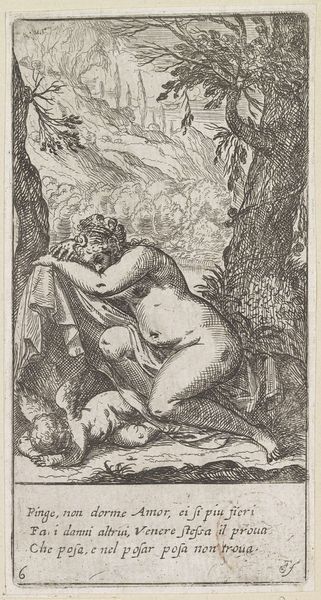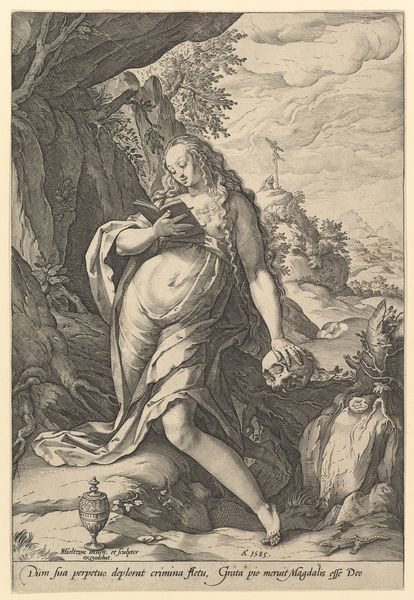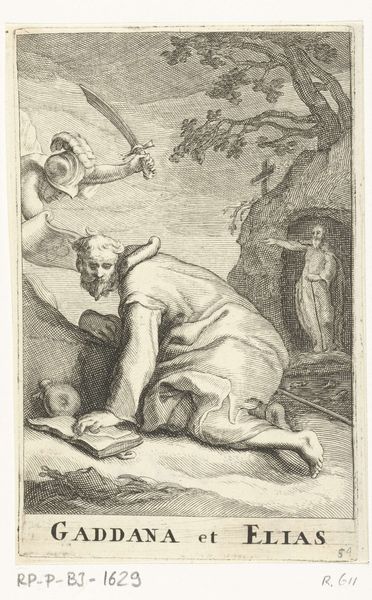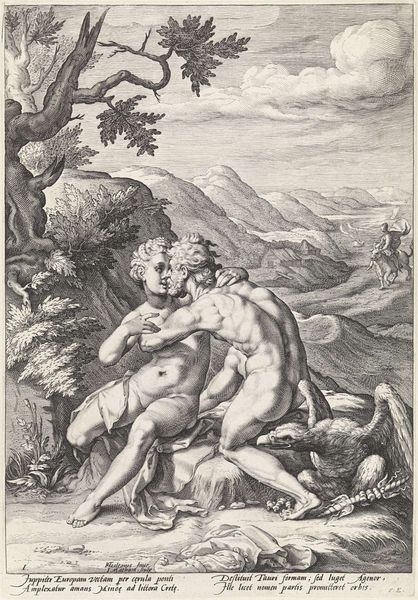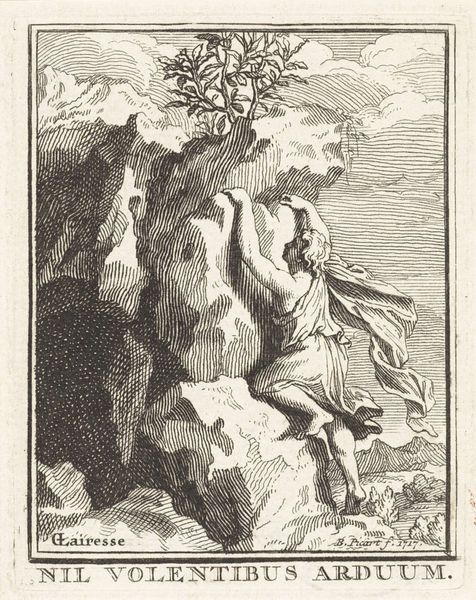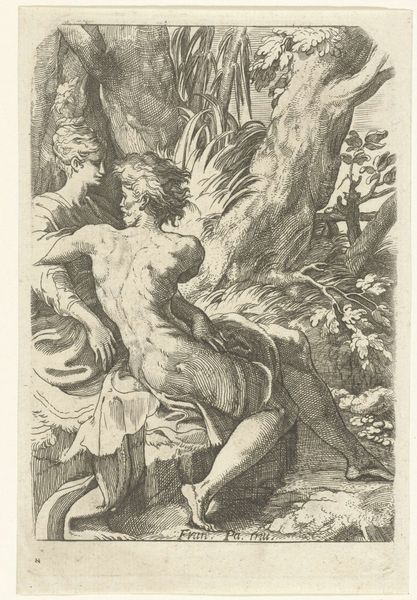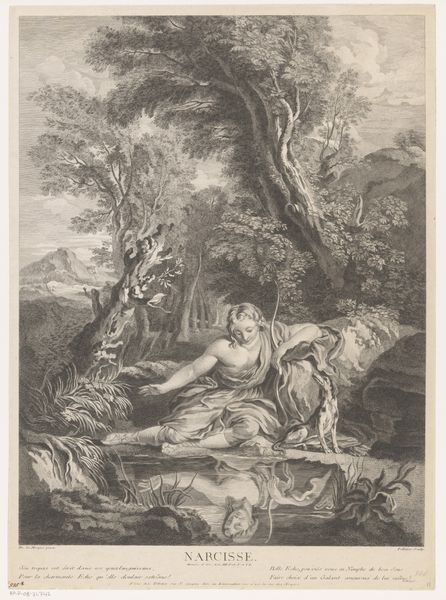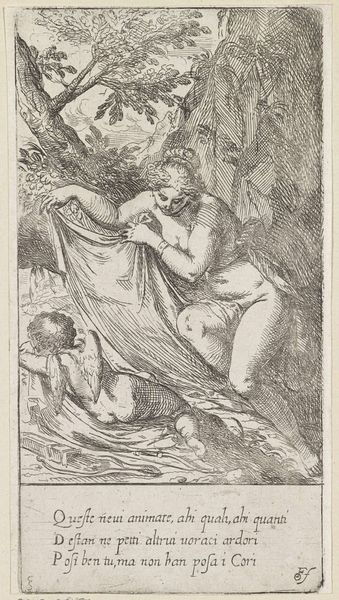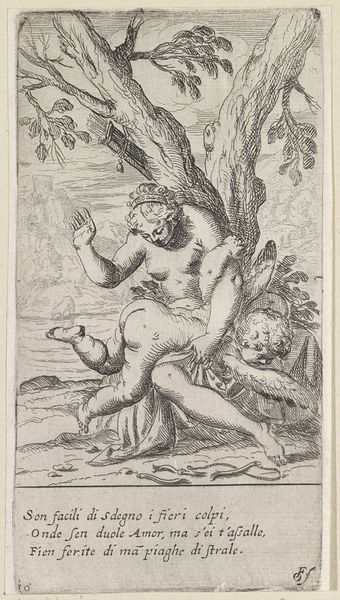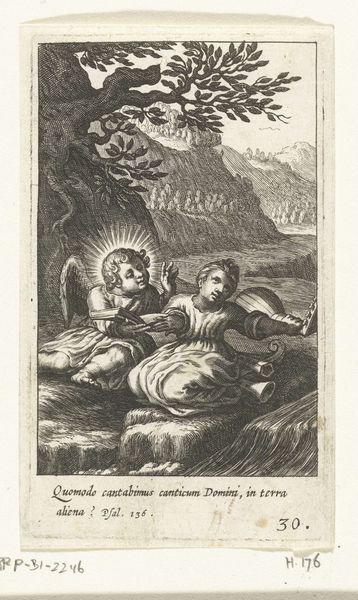
print, engraving
#
baroque
#
pen drawing
# print
#
pen illustration
#
landscape
#
figuration
#
line
#
genre-painting
#
nude
#
engraving
Dimensions: height 137 mm, width 80 mm
Copyright: Rijks Museum: Open Domain
Curator: What a fascinating print! This is “A man lies under a tree,” made in 1717 by Bernard Picart. It's currently held in the Rijksmuseum. Editor: My initial impression is one of tranquility disrupted. There's a reclining nude figure seemingly startled in a serene landscape with animals—goats, dogs, even rabbits. It feels like a moment of realization intruding upon Arcadia. Curator: I agree, there's definitely a narrative tension. Looking at Picart’s process, it's fascinating how he used the precise lines of engraving to create a detailed yet ethereal atmosphere. Think about the labor involved in each individual line etched onto the plate, replicated for numerous prints intended for wide distribution. What was the audience? And what materials would have been used in creating the physical object that they held in their hands? Editor: Precisely! And given that, let’s contextualize a little. It's interesting that the print contains the words: "Who am I? Where am I? Where have I come from?" next to a naked, awakening male figure—suggestive of enlightenment or perhaps an interrogation of male power structures emerging in the eighteenth century? The choice to represent that question through the male nude specifically also hints at how ideas around morality intersect with concepts of art. What statements does that make? Who does it exclude? Curator: It’s true, examining those prints closely really unveils so much, not only the artist's hand but the whole socio-economic picture around printmaking at the time. From the paper mills that provide material to printmakers finding a market in urban centers--this image acts as window into a bustling production network. Editor: Indeed. Ultimately, art isn’t produced in a vacuum. Exploring its production, circulation, and reception opens up crucial pathways to thinking about ourselves in the present, our histories, and the many diverse hands that helped create them. Curator: Absolutely. Seeing how the very materials and processes themselves carried social and economic weight offers vital insight, broadening our grasp on how visual representation both influenced, and was shaped by, larger society at the time.
Comments
No comments
Be the first to comment and join the conversation on the ultimate creative platform.
